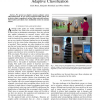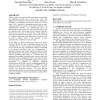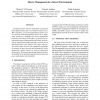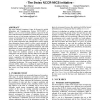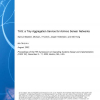WINET
2002
14 years 4 months ago
2002
Wireless ad-hoc sensor networks have the potential to provide the missing interface between the physical world and the Internet, thus impacting a large number of users. This conne...
CGA
2008
14 years 4 months ago
2008
We present an adaptive museum guidance system called PhoneGuide. It uses camera-equipped mobile phones for on-device object recognition in ad-hoc sensor networks and provides locat...
SENSYS
2003
ACM
14 years 10 months ago
2003
ACM
Wireless ad-hoc sensor networks have emerged as an interesting and important research area in the last few years. The applications envisioned for such networks require collaborati...
IPSN
2004
Springer
14 years 10 months ago
2004
Springer
Automatic self-calibration of ad-hoc sensor networks is a critical need for their use in military or civilian applications. In general, self-calibration involves the combination o...
ICPADS
2008
IEEE
14 years 11 months ago
2008
IEEE
Traditional sensor network deployments consisted of fixed infrastructures and were relatively small in size. More and more, we see the deployment of ad-hoc sensor networks with h...
ICALT
2008
IEEE
14 years 11 months ago
2008
IEEE
Ad-hoc sensor networks provide a cheap and scalable technology for constructing pervasive learning assessment systems that are embedded in physical environments. This paper propos...
MOBIHOC
2001
ACM
15 years 4 months ago
2001
ACM
The development of practical, localized algorithms is probably the most needed and most challenging task in wireless ad-hoc sensor networks (WASNs). Localized algorithms are a spe...
131
click to vote
SIGMOD
2006
ACM
15 years 4 months ago
2006
ACM
The Swiss National Competence Center for Research in mobile Information and Communication Systems (NCCR-MICS or MICS) is one of several research initiatives sponsored by the Swiss...
OSDI
2002
ACM
15 years 5 months ago
2002
ACM

